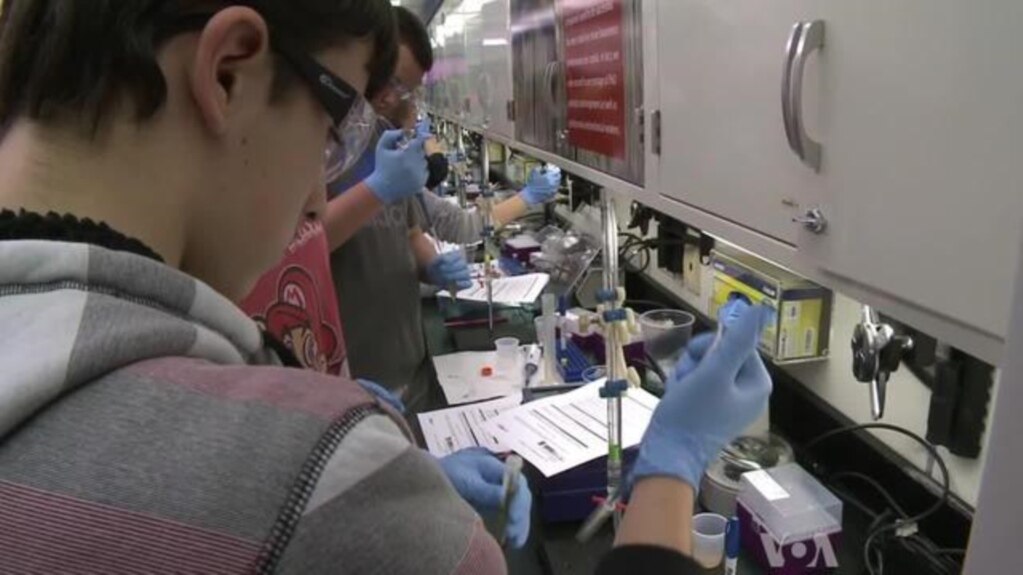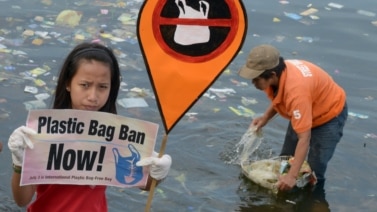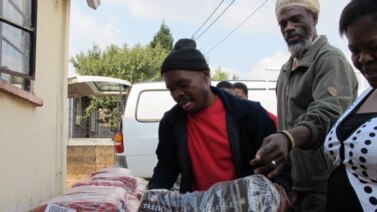
Hello, and welcome to As It Is from VOA Learning English.
I’m Christopher Cruise in Washington.
Today on the program, we report on a new device for quadriplegics -- people who have lost control of their bodies from the neck down. Not every part of their body is paralyzed.
“The tongue not only is, has sensory inputs to the brain, but it also has a very good motor capability.”
But first, we report on an unusual way to study science in the state of Maryland. High school students across Maryland now have a chance to perform experiments with the help of real scientists using laboratory equipment on a bus.
“We have anything from biology to forensic science. So we have a blood lab where they try and go ahead and test to see if any of our evidence samples have blood on it.”
It’s America on the move today on As It Is, as we help you learn to read, speak, write and understand everyday American English. Listen carefully, and before you know it, you will have improved your American English by listening to As It Is on VOA.
Science Education…on a Bus!
Most schools in America do not have the latest in laboratory equipment. It is just too costly. But the state of Maryland and a non-profit group found a way to make such equipment available during some parts of the school year. As Steve Ember tells us, they put it on a bus!
The 13-meter-long Maryland BioLab is a mobile classroom filled with equipment that lets students explore many kinds of science. It travels around the state visiting schools. Today, the bus has stopped at Patapsco High School and Center for Arts in the city of Baltimore. Science teacher Leah Warble is very pleased that her students could perform an experiment using real chemicals.
“And today the chemistry students were able to do an acid-based hydration, which just means they neutralize an acid with a base. So normally, they would do it through simulations on the computer. And now is able to allow them to do it in real life, actual time and actually apply it to something that we use in real life -- which is biodiesel.”
Scientist Angel Mangus led the mobile laboratory on the day VOA visited.
“There are two TVs, so there’s one down this end and there is one down that end. If you get lost at any point in time on your paper or what I am saying and you can’t see me, I have a camera…”
Ms. Mangus says the equipment lets students explore many different kinds of scientific interests.
“We have anything from biology to forensic science. So we have a blood lab where they try and go ahead and test if any of our evidence samples have blood on it. We also have DNA analysis lab where they try and test to see who did a specific crime. And we also have chemistry.”
The mobile lab has been bringing bioscience education to schools around Maryland for more than ten years.
“It’s really nice to get them in here with hands-on activities. They get really excited and they want to be engaged.”
Ms. Mangus talks to the students about how she became a scientist.
“At the end of each class, if we have enough time, we like to take five or ten minutes, talk about us, ourselves. Tell them how we got into science, maybe where we went to school, what we did, the different kinds of things that we could do.”
She says many students finish their experiments and leave the bus excited about the possibility of becoming a scientist.
The Maryland BioScience Foundation supports the BioLab program. Brian Gaines is the chief executive officer of the foundation. He says the organization’s goal is to help create the next generation of scientists.
“One of the reasons that we do this, this program is to talk about careers in science -- not just science, but science, technology, engineering and math.”
Mr. Gaines says students on the bus get real-life experience they do not get in a classroom.
“The equipment that the students are using on the mobile lab, they don’t have in schools. So our instructors are actually scientists, they work alongside the teachers. So they bring that science experience from the laboratory into the schools and they teach students how to use actually the newest techniques that we have in science.”
That made a difference to 15-year-old Seda Sinan, who is interested in biology.
“It, like gave me, like, more materials to work with than I had at school. It’s more, like, interactive.”
Her classmate Shenara Jefferson agrees.
“Well, it really showed me how just a little bit of difference can really impact, like, your product when you’re doing something in there. Like, I only added just a little bit of the solution and it completely affected my entire thing.”
Back in the school classroom, Leah Warble’s students continue working on the results of their experiments on the bus.
“It does help me do my job.”
Ms. Warble says children usually do not know what they are interested in until they get real-life experience with a subject.
“Well, the excitement of feeling like a real scientist -- I mean, even just a change in the, in the, what they were wearing, wearing goggles and, and blue gloves versus white gloves made them feel more television scientists, if you will. To, to handle that kind of situation makes them feel like more responsible for the work because they are now intrigued in, in doing it and they feel respected and responsible since we gave them those opportunities.”
A Wheelchair Controlled by Your Tongue!
People paralyzed from the neck down must use a wheelchair to move around. One of the biggest problems for them is controlling the movements of the wheelchair. To help them, American scientists have invented a system that lets those who cannot move their arms and legs operate the wheelchair with their tongues. The device is so easy to use that it may open up other possibilities for these people, who are called quadriplegics.

A very small magnet is placed on the person’s tongue. Each movement changes the magnetic field around the person’s head. Sensors in a headset read the changes and send them to a smartphone. A smartphone application, or app, then changes them into commands for the wheelchair’s motors. As the patient slowly moves his or her tongue, the wheelchair begins moving, then changes direction.
Maysam Ghovanloo is an associate professor of electrical engineering at the Georgia Institute of Technology. He invented the tongue drive system.
“The tongue not only is, has sensory inputs to the brain, but it also has a very good motor capability, so why not using the tongue as an output of the brain?”
He says his invention is more useful for quadriplegics than voice commands, because their voices may be weak. Researchers are developing other systems that would let quadriplegics use electrical signals from the brain to control devices.
Professor Ghovanloo says his patients were able to learn how to use the tongue drive in a few hours. His team now is developing it for controlling almost anything.
“And the target device could be your wheelchair, could be your computer, could be your flat-screen TV, air conditioning system -- you name it, because the rest of the technology is already in place.”
The Georgia Tech team also is seeking to put the magnetic sensors into a dental device. So a headset would not be needed.
Professor Ghovanloo says his device could be available for purchase within a few years.
And that’s our program for today. It was written in Special English from reports by Faiza Elmasry in Baltimore, Maryland and George Putic in Washington.
I’m Christopher Cruise reporting from VOA Learning English headquarters in Washington. I’ll be back next week at this same time, and June Simms will be here tomorrow, with another edition of As It Is. I hope you’ll join us then, here on The Voice of America.





